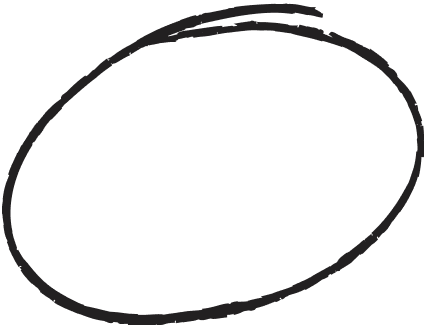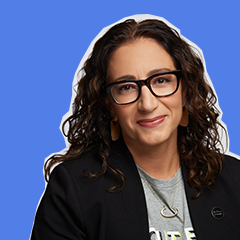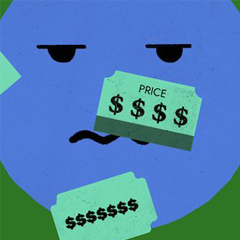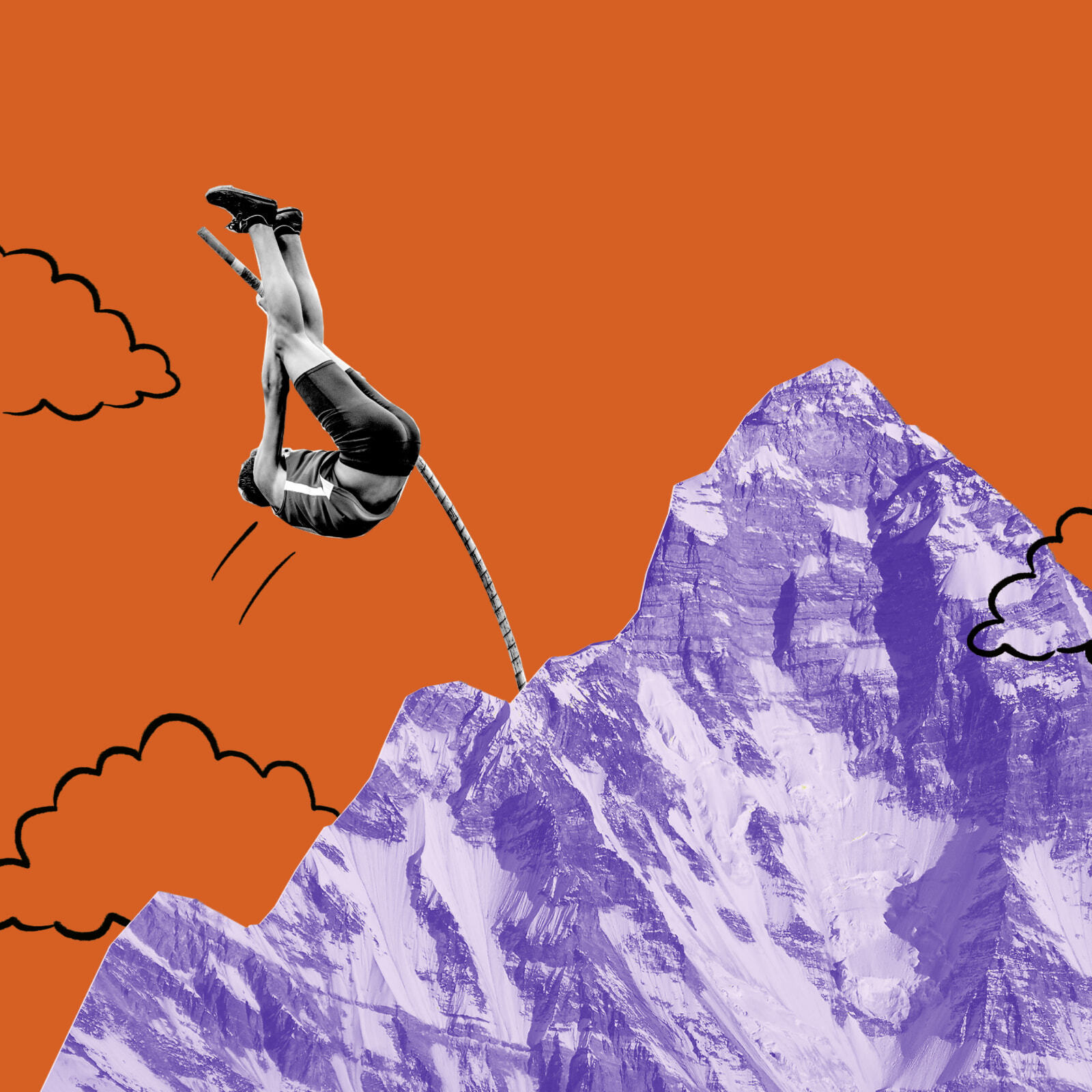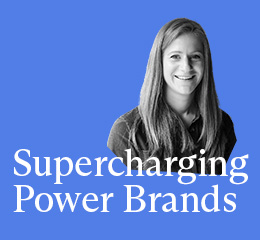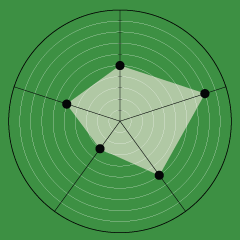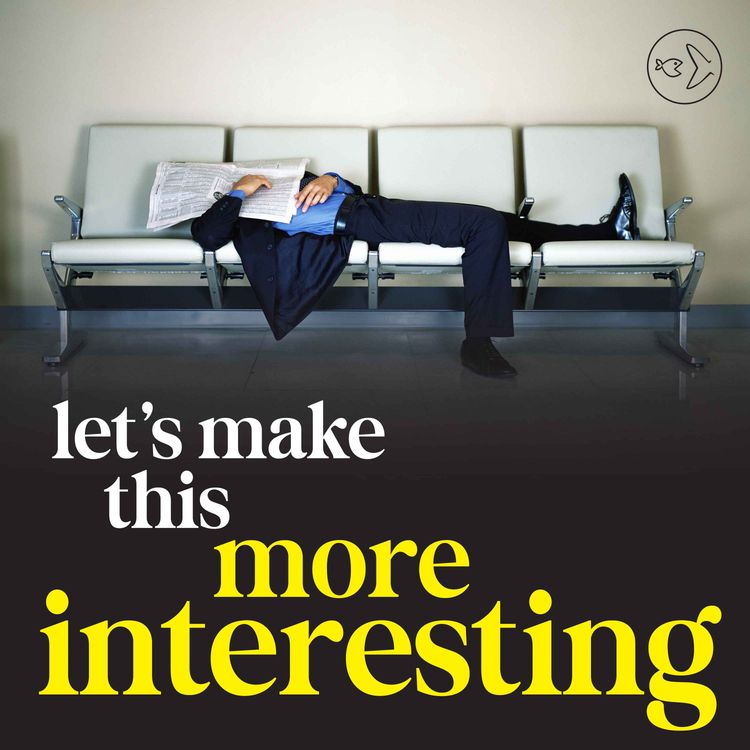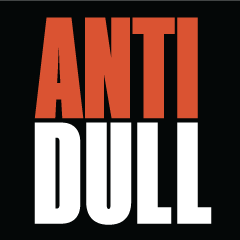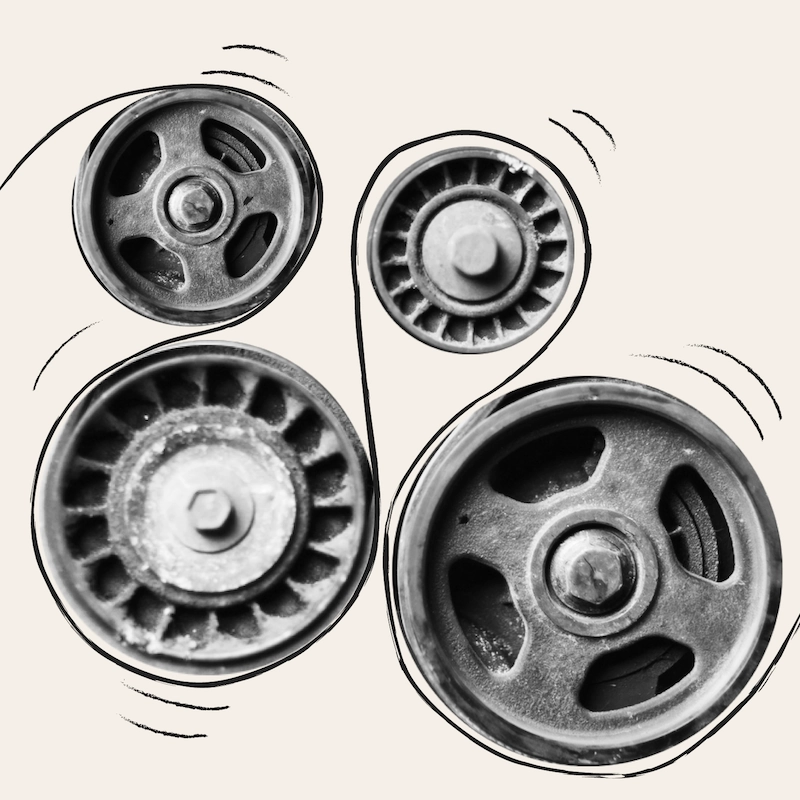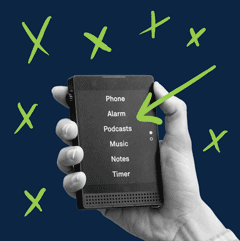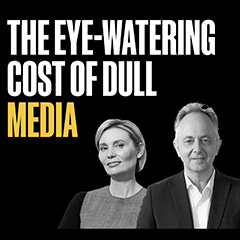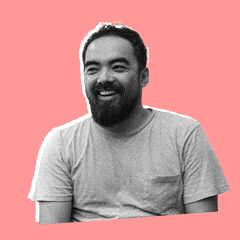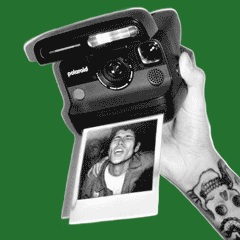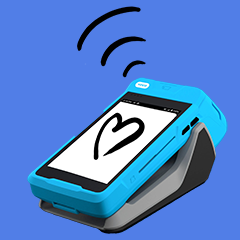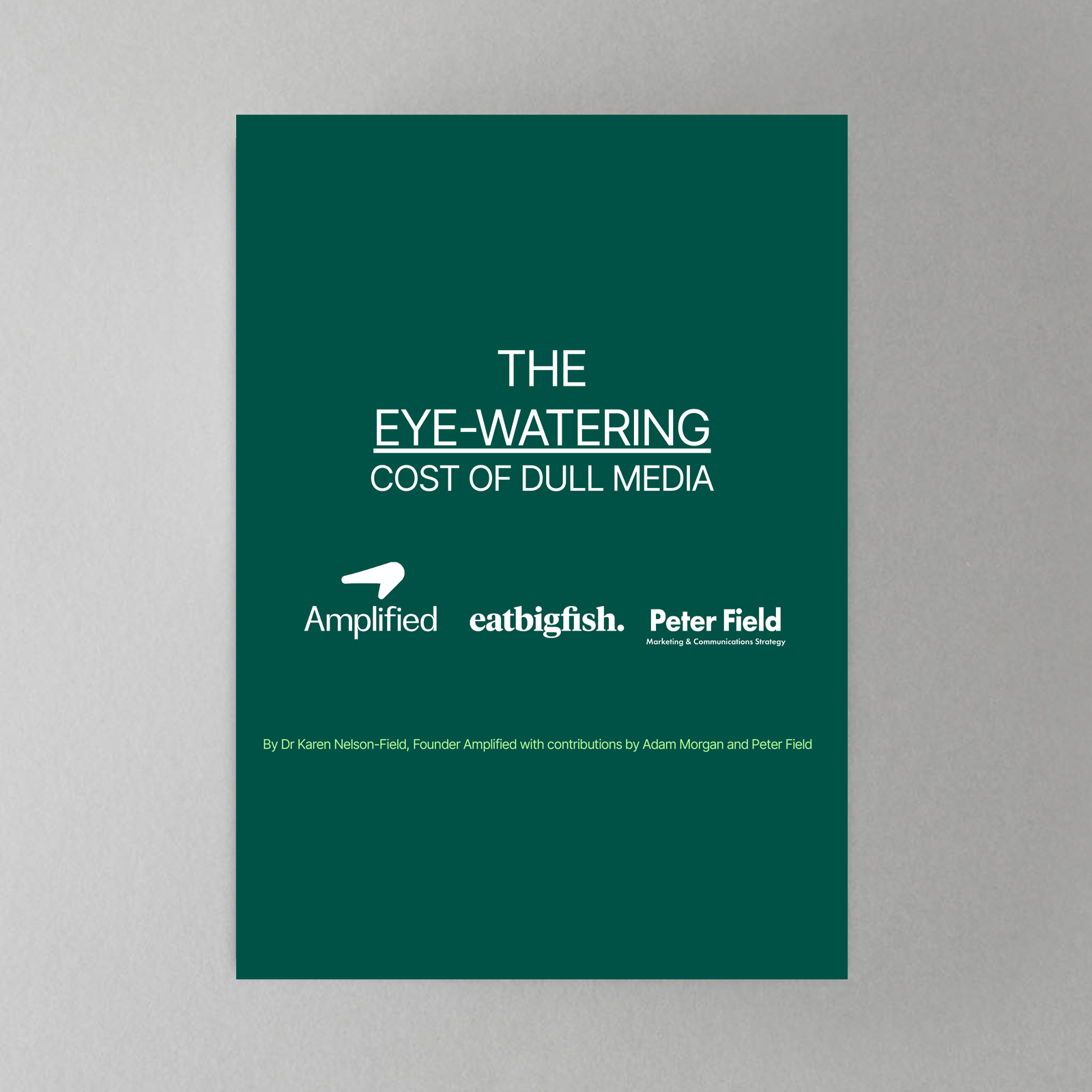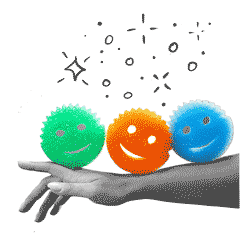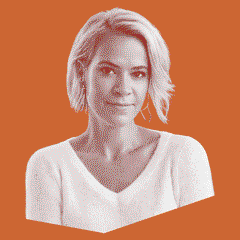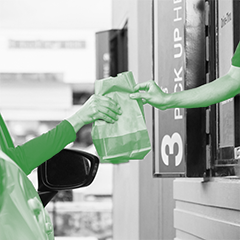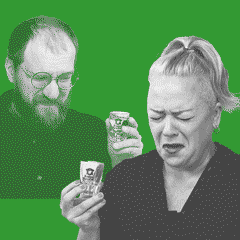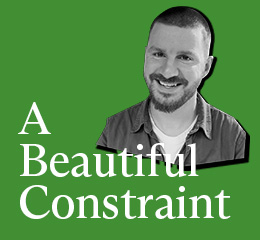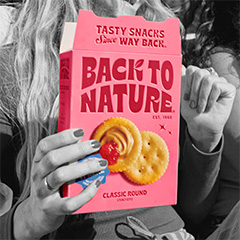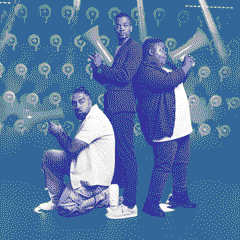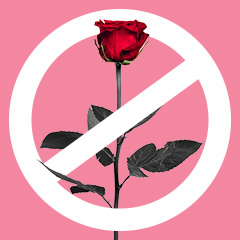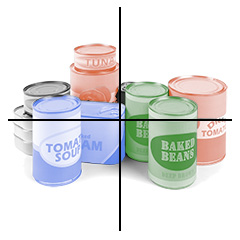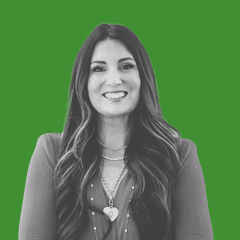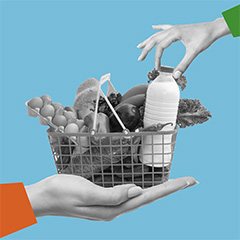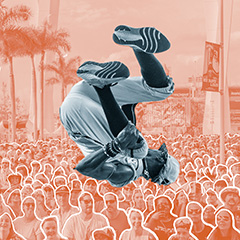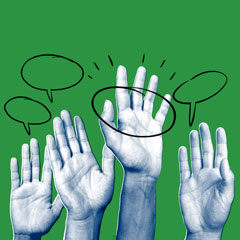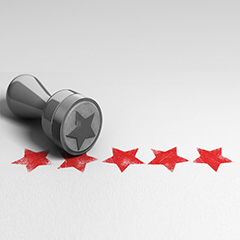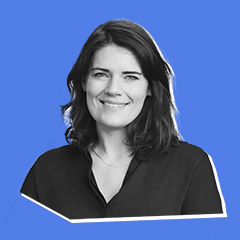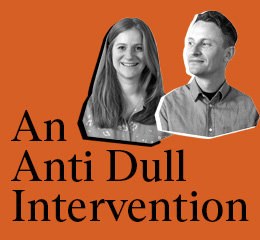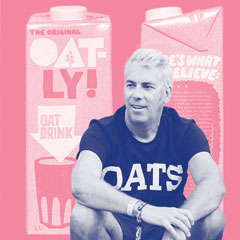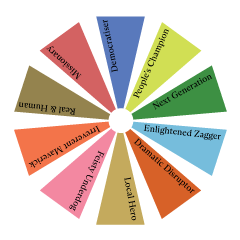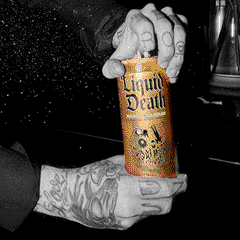Pirates in the Navy: Creating a Challenger culture at the heart of Air New Zealand
Pirates in the Navy: Creating a Challenger culture at the heart of Air New Zealand
A team of 4 pirates in a 10,000 strong navy, the story of Grabaseat at Air New Zealand is a masterclass in how a small team, armed with audacity, creativity, and a pirate spirit, can ignite lasting cultural change in a legacy brand (and themselves). Adam Morgan and Sarah McAllister caught up with Sunil Unka, Principal Owner and Strategist at Strategically Available (and former eatbigfish client) about his time at Air New Zealand, having fun with your brand culture, and what it really takes to spark transformation from within.
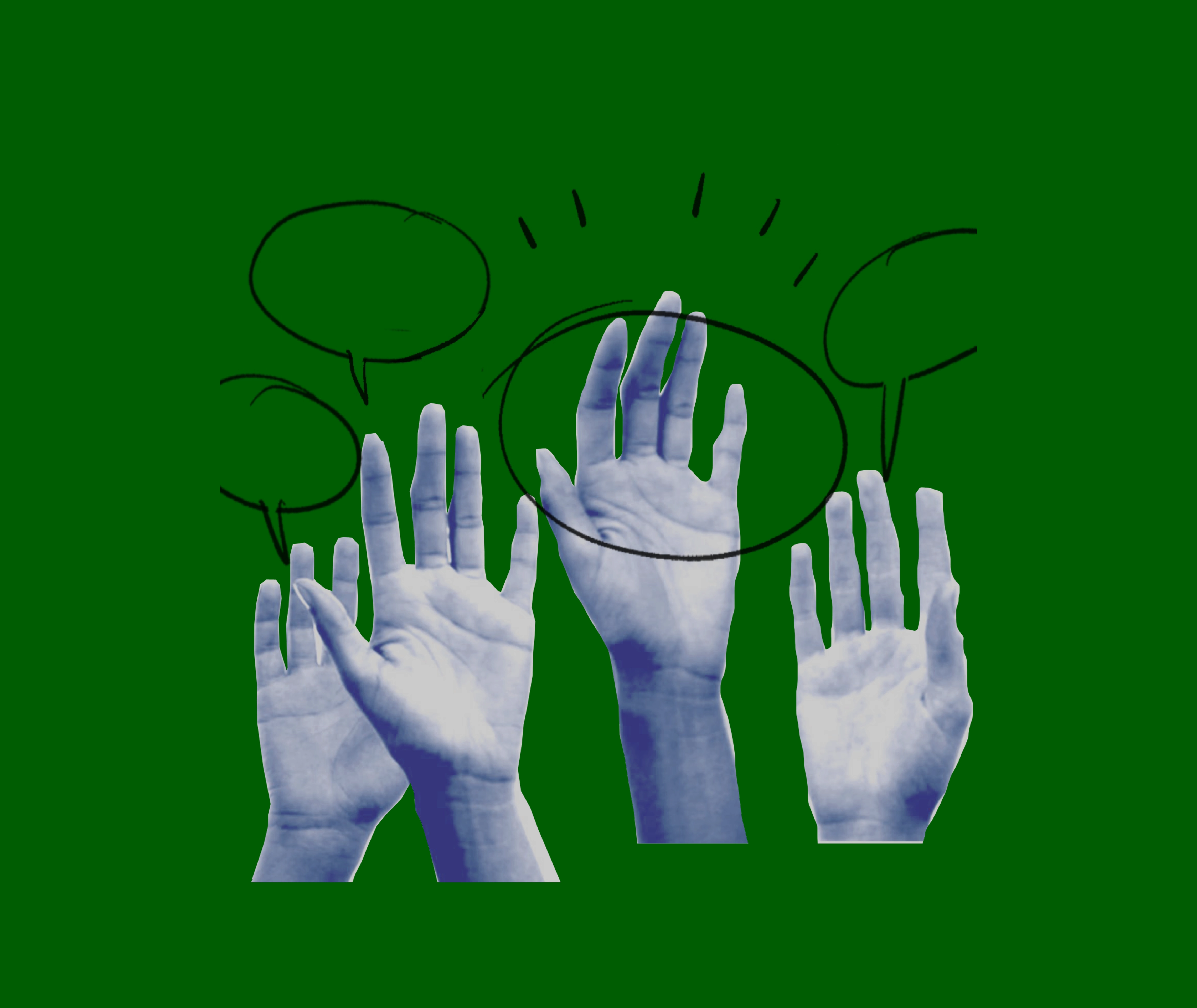
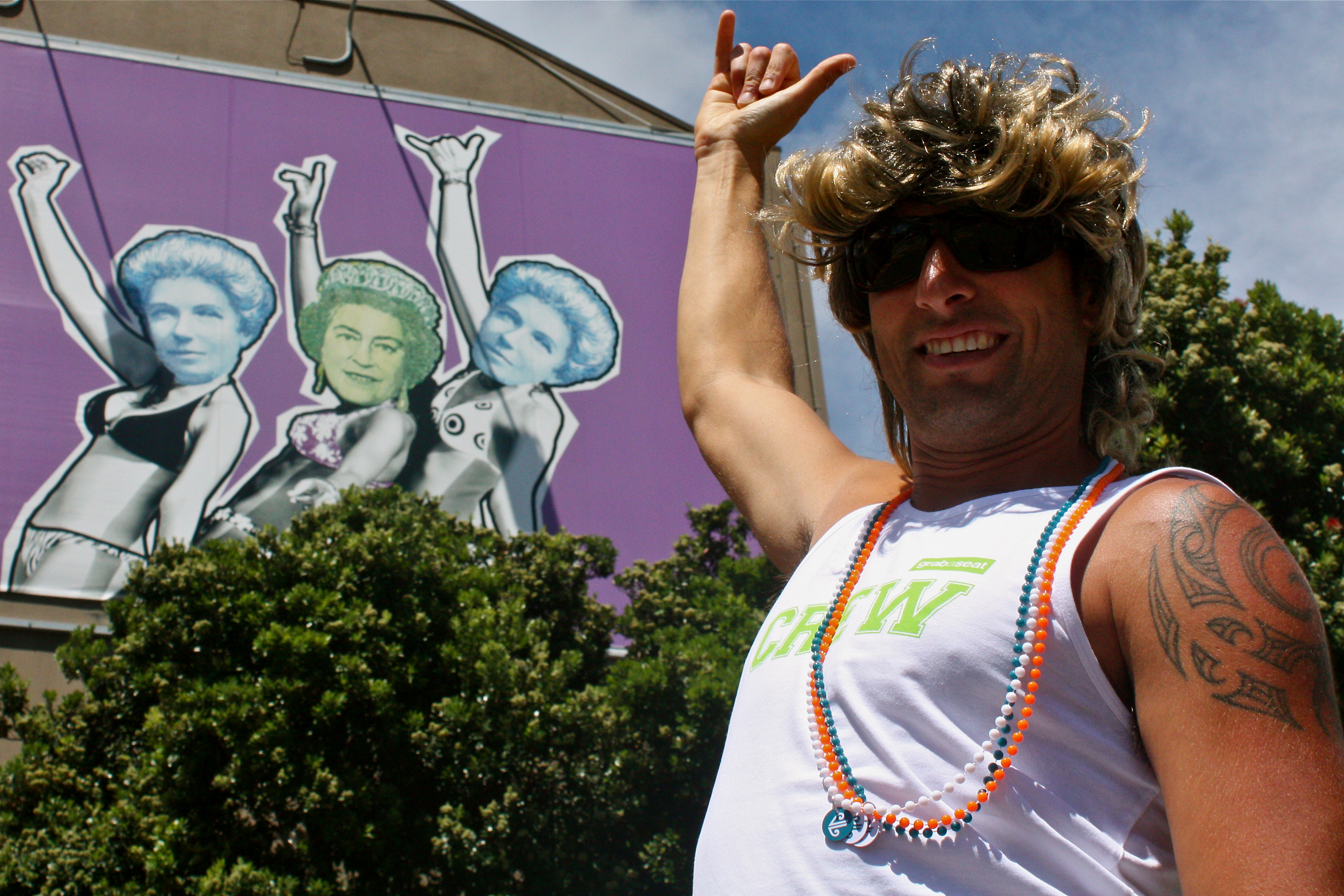


Tell us about Grabaseat and how it fit in with the wider ambitions of Air New Zealand.
The way the project was set up was really unheard of in New Zealand at the time. It was really groundbreaking, this idea of a Challenger Brand inside a large corporate heritage brand, and the idea was that we had to align with the overarching strategy of Air New Zealand. So, there were a few specific things that they were after from us. One was that there were some Australian competitors coming into the New Zealand market and buggering things up for us a little bit. There was also a loss of love in the regional areas of New Zealand as well, which often happens with national carriers, where they put on the smaller planes for these regional flights, and the prices are quite eye-watering. So, not only is there reduced capacity, but the poor locals in those smaller regions have to pay through the nose to get anywhere. So, Air New Zealand was getting a bit of a battering in those regions, so the aim was to bring back some love there. And then the other thing was to try and fill the planes. Flights are like beds in hotels: once the night is done or the flight has been, you can't sell that night or seat again.
So, the idea of Grabaseat was born from those strategic challenges and a few constraints as well. One of the constraints is that you can't do anything that's going to damage the price perception for a full priced flight. The other was that you can't erode the 80% of the plane that's already full at a more reasonable price that might be profitable for the airline. Lastly, we were given constraints as a foursome of pretty much no budget and also very little direct leadership support. We didn't report into the normal hierarchy of Air New Zealand, but the beautiful thing we did have, was access to other talented resources inside the business. So, the idea for Grabaseat was to basically flip the whole pricing model on its head and start by selling seats for $1 and then, in order to meet all those other criteria, it was reoccurring flash sales. So, the seats would only be available for 24 hours and there would be a limited number of seats per flight with no indication of what flights would be on sale on any given day. The combination of routes and number of seats and price was always different. It was launched originally as a short-term campaign, and then it grew legs. Now 15 years later, it's still part of Air New Zealand.
So, the Grabaseat team was formed as a Challenger within a big company, or a 'pirate inside the navy'. Can you tell us about the goals of that project and how eatbigfish helped?
We had a lot of amazing people in and around Grabaseat as a project, but also around Air New Zealand at that time. And there was also this wonderful human named Kate Smith from eatbigfish, and she was brought in to run the Pirate workshop and create a ‘charter’ for Grabaseat. The charter was to be the core essence of what our culture was, because, of course, a true Challenger culture starts from the inside out. So, it was all about how we would behave, and how we would think differently, and how we would do things differently internally, that then became the external projection and manifestation of the brand.
So, Kate helped us work out the core elements of that charter. One of the core pieces, of course, is, what do we stand for? And importantly, what are we standing against? We wanted to reframe airline ticket sales by rallying against was this growing affluenza and stuffocation that was happening in people's lives. It was over-consumerism, and we were reframing ourselves against that. So, rallying against needless spending on things, to becoming experience junkies, creating a movement around that, which is this ‘doing society’ and not about collecting stamps or badges or postcards, but it's more about that creation of shared memories. And it was also against just boring things.
We also thought about the reframe for the purchase, from a very considered purchase, because most people think about the day of the week, the time of the day, to turning it into an impulse buy, because you've only got 24 hours or less, because there's only 25 or 50 seats. And the way that we displayed that on the website was a live tally. So, reframing it as an impulse purchase was right at the centre of what we were trying to do. The purpose of Grabaseat was to unleash the spontaneity inside of deal-loving Kiwis. It was about taking that thing we're rallying against, this rampant consumerism, and going, actually, we can use some of those emotional triggers, because people still love a deal. But this was a deal that allowed them to have a shared experience.
Tell us about some of the more theatrical, deliberately provocative things that you did in the office. How did that relate to your Pirate Inside charter?
So a really boring example was shorts and T-shirts straight away from day one. It seems really simple, right? But on that first day, people go, ‘how come you're allowed to do that?’ Well, we didn’t ask anyone. We just did it. So, that was kind of the starting point. And when anyone had an idea internally on our team, there had to be theatre, because it was the best idea wins. We were all competitive with each other, so we would go the extra mile. For example, if I'm going to pitch an idea for a weekend snorkelling somewhere, then I'm going to turn up in my wetsuit and snorkel. You just naturally got that from the four of us. And this was partly because when we were accepting the challenge to be this Pirate inside Air New Zealand, we knew that in order to do that, we had to become what we wanted the brand to be. So, at every opportunity, we infused this ethos into everything we did.
So, once we had this charter, we wanted to present it to Rob Fyfe our CEO, and we decided the most pirate thing to do would be to kidnap him. So, we dressed up as pirates and everyone was just looking at us on our floor as we got into the elevator to go up to Rob's office. The doors opened, and his EA just looked away with a little smile on her face. Then Rob looked at us, and he had a big grin on his face as well. So, we go storming into his office like swashbuckling pirates with swords, and then the idea was that we were going to blindfold him. But when I went to get the blindfold, I saw his face drop. So, I thought, this is one of those times where we might be going too far because we needed to get Rob's buy-in for this charter, so maybe I'll just put the blindfold away. Anyway, our head office was on the waterfront in Tāmaki Makaurau Auckland, which is the City of Sails in New Zealand, so we hired a small sailboat for this endeavour. We took Rob out on this little yacht and then presented our Pirate Charter to him. And he was happy with it because he had a clear vision of how he wanted this to go down. Not the details of it, but he had a vision, and he could see it coming to life in that moment. And maybe it would have been different, if we were in a usual environment, we all came with our shirts on, we booked a meeting, and we put the slides up on a PowerPoint, and said, ‘Here's our charter.’ He probably would have picked holes in it and criticised it, because that’s what you do, right? But when you are in the middle of the sea and you’re presented with this thing, then there’s not much point in pulling it apart, because this is what you wanted to create.

How did the work with eatbigfish on creating this charter impact the story that you were able to tell with Grabaseat?
It was the first time I had seen anything put into this sort of frame. I feel like I have always had an innate pirate inside me my whole life and I’ve always felt like a bit of an outsider. So, this way of working felt like, this explains me. But having the elements that are part of that charter were key, so things like: what's our reframe here on the market or the industry or the conversation? What are we going to do after that? So, in the charter it was called ‘prey’, like shopping malls. And who are our citizens? Who are the people that are going to join this movement? Having all of these little frames of reference for the elements that we're going to make up, culture and brand, really helped and then how visceral each of those things became, because it wasn’t just something that's intellectualized and you think about, but it's something that you really feel. I don't think we could have then created a product, communications, campaigns and ideas around anything that was too overly intellectual, because the movement wouldn’t have worked. What we were really trying to do was to unleash spontaneity inside people. You can't ignite those real deep feelings inside of people and get them to act very unconventional, very outside of the things that they normally do, by being too intellectual. We wouldn't have been able to get people outside to make those sorts of leaps, unless we had all of that framework based around emotional connections and emotional ways of being.
How was the eatbigfish process different to anything else you’ve done before or since then?
What was key was the concept of having a lighthouse identity and being a really bold brand, and the way that that projects itself, becoming that guiding light out in the marketplace. So, without going through this process with eatbigfish, creating these frameworks, I don't think we would have been able to create that type of identity and that type of attractive flow. I also don't think we would have gotten to some of the ideas and the actions that we took that then really showed what sort of commitment we had to that brand identity.
So, without these frameworks as touchstones, that wouldn’t have been possible. And that's what I've found in subsequent years when I've been applying this thinking and frameworks and applying this way of being to other places as well. If you've got bold ambitions, you can't drive the outcomes you want unless you really know who you are. And then you overcommit to being that. The real intensity comes when you overcommit to being that at every single opportunity in everything you do. So, that's why it became a part of who we were as a team on a daily basis, as well as what we did as a brand on a daily basis. And I don't think it's possible to do that unless you overcommit like this. If you just commit like everyone else, you just become wallpaper. And people don't even really notice you, let alone pay attention to you, let alone join you in what you're doing.
One of the key ways to be a pirate inside the navy is binding, which is about having singularity of direction within your team. How did your four-person team maintain that focus?
We became really close. It worked, because we didn't have a traditional structure, and we didn't have specific roles and responsibilities. We would all just do what was necessary to do. And so that meant we were always revolving around a little bit. We had a pirate captain's hat that we put on, but it might change heads throughout the day. No ego, no hierarchy, best idea wins, which was usually the most fun. We spent so much time doing fun things together, and you just naturally bond together when you spend your whole day laughing. So, that became a big part of it. We also made sure that when we were out and about, we would be there together as a team. We sponsored the Suitcase Race at the Winter Festival in Queenstown, New Zealand. The race was super dangerous, you’re just bombing down the mountain sitting on top of a suitcase, on the snow, but it was a lot of fun. We definitely bonded through those shared experiences that we were actually giving other people. We were having those experiences together as well.
One of the things that fun unlocks for a team is that you create a kinship with each other. People who have fun together, they relate well to each other, and they're more open. But when it's a deadpan situation, the tension is high and people hear the clock ticking, fear goes up, and ideas go down. Creativity goes down. Or even if you are being creative, you have to really put yourself out there if you are going to share something. But in a fun environment, throwing ideas around doesn't really matter, because you're just having fun. You end up free-wheeling a lot more. We would draw things on the board while we're having a great time laughing about stuff, and because we were drawing everything, it didn't really matter what you threw out. Maybe something was worth exploring further, but you couldn't get there if there wasn't that camaraderie and that laughter and joy.
The other thing about fun is the attractive quality of it. So, what fun did for us internally, was that we were the team that everyone wanted to be a part of. What that meant was that people would come to us with their ideas, because if they had good idea and we were going to run with it, then they got to be part of that. We'd invite people to join us temporarily, if they came to us with a good idea, but also if we were going to events and going to be on the ground somewhere, we would call for volunteers to come and join us. And because of the way we were having so much joyful fun, everyone wanted to join us. So, we would get talent, ideas, and help, because people are attracted to the fun. I also think that all of that fun and joy ends up projecting out through the things you do as well – whether people know it or not, they can sense it.
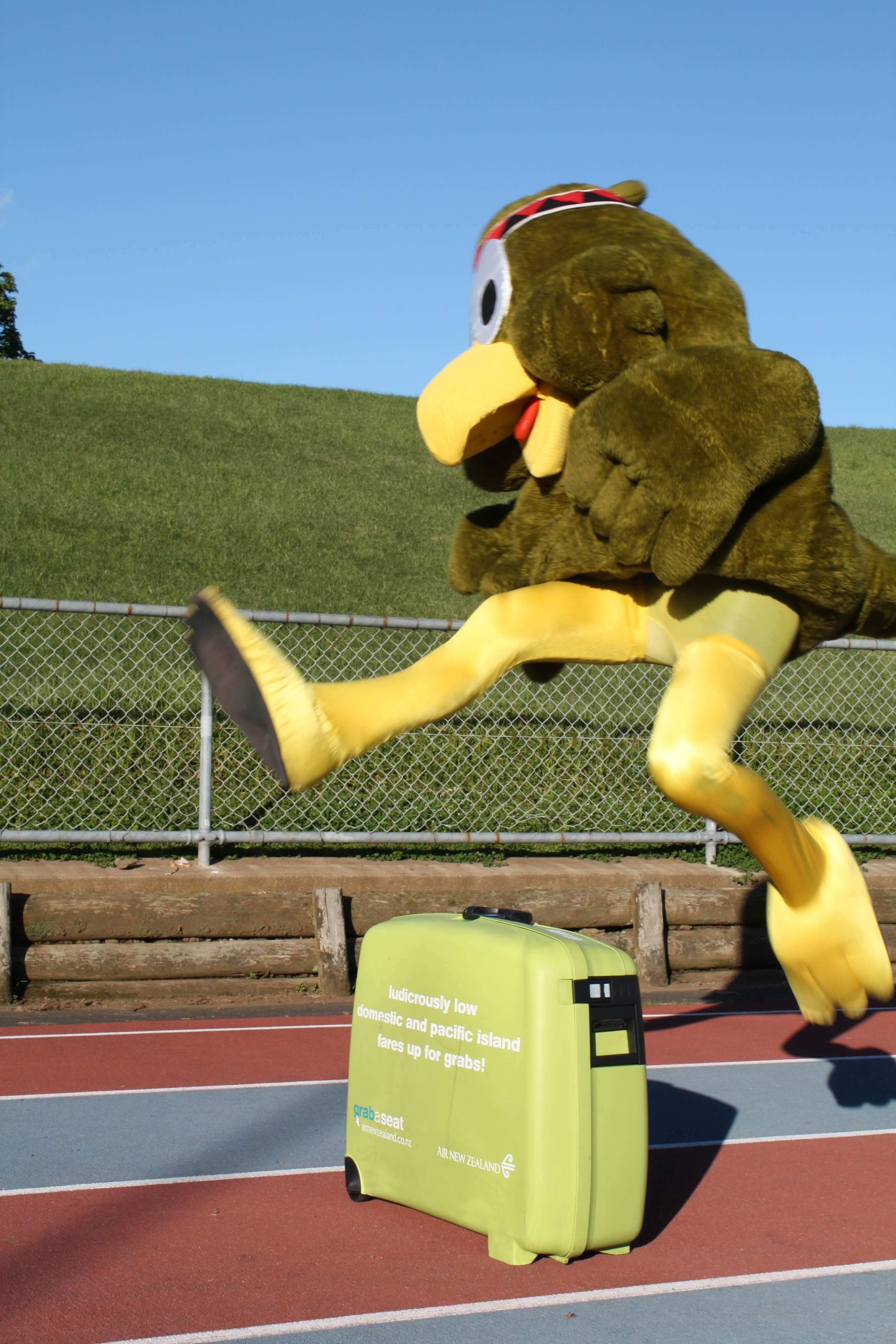
You had so many different activations – what’s one of the ones that stands out the most to you?
The thing that I’m most fond of and look back on with love and deep emotion was the team and how the four of us really embodied the pirate inside the navy. We embodied the brand. We were four people that wouldn't usually be together in that kind of way, and we ended up forming these deep relationships, because we were always in it together, doing these things together. That’s my fondest memory.
The biggest highlight we did from a promotional point of view was something quite ambitious for New Zealand Music Month. We got Opshop, a New Zealand band who was pretty popular at the time, and we took an Air New Zealand plane to do 10 gigs at 10 different destinations in one day with this band's biggest fans. We started in Ōtautahi Christchurch at stupid o'clock in the morning and then hopped up the country doing these gigs in mostly small regional towns. We brought a lot of love to those regions as well, because it was a really popular band, so people were turning out over the main street of their small towns, and we'd have the band on the back of a flatbed truck. After each show, we would quickly get them back onto the next flight. While we were inflight as well the lead singer was singing on the microphone, and it was just the most wonderful, wonderful atmosphere, and it culminated in quite a large gig in Tāmaki Makaurau Auckland. But we failed slightly because in between one of our small towns and the next, we hit a bird, so we had to get a new plane, but this is where the resources of being part of Air New Zealand helped. So, we ended up with nine stops but still pretty good.
What's the one lesson about being a pirate in the navy that you’ve continued to use as you’ve moved onto other jobs? What advice would you give others on how to be a pirate in the navy in their own work?
Everywhere I've gone since Air New Zealand, have been really ambitious places which have really big bold visions, the kind of visions and ambitions that people believe in and buy into. But the thing I learned from my time at Grabaseat is that if you truly want to go after that vision, if you really want to realize the ambition that you've got, you've really got to overcommit to it with good intensity. You've got to be quite intense about it, and when you think you've got things to a point, you actually need to go a little bit further and a little bit further. You need to go further, because most human beings are worried about what other people might think of them. So, we're going to put that self-consciousness where we think the boundary is, but the boundary is actually further than that. And sometimes it's also that we tell ourselves things like: it'll be okay if I have that cheat day, or I don't go to the gym this day or whatever, but I’m still going to be this amazing athlete or this very healthy human being. But actually, if you really want to be those things, you have to do those things every day. The same is true with brands and businesses. If you really want to be the things that you put down on paper or the things that you say, you really have to act in that way with integrity every single day.

Tell us about Grabaseat and how it fit in with the wider ambitions of Air New Zealand.
The way the project was set up was really unheard of in New Zealand at the time. It was really groundbreaking, this idea of a Challenger Brand inside a large corporate heritage brand, and the idea was that we had to align with the overarching strategy of Air New Zealand. So, there were a few specific things that they were after from us. One was that there were some Australian competitors coming into the New Zealand market and buggering things up for us a little bit. There was also a loss of love in the regional areas of New Zealand as well, which often happens with national carriers, where they put on the smaller planes for these regional flights, and the prices are quite eye-watering. So, not only is there reduced capacity, but the poor locals in those smaller regions have to pay through the nose to get anywhere. So, Air New Zealand was getting a bit of a battering in those regions, so the aim was to bring back some love there. And then the other thing was to try and fill the planes. Flights are like beds in hotels: once the night is done or the flight has been, you can't sell that night or seat again.
So, the idea of Grabaseat was born from those strategic challenges and a few constraints as well. One of the constraints is that you can't do anything that's going to damage the price perception for a full priced flight. The other was that you can't erode the 80% of the plane that's already full at a more reasonable price that might be profitable for the airline. Lastly, we were given constraints as a foursome of pretty much no budget and also very little direct leadership support. We didn't report into the normal hierarchy of Air New Zealand, but the beautiful thing we did have, was access to other talented resources inside the business. So, the idea for Grabaseat was to basically flip the whole pricing model on its head and start by selling seats for $1 and then, in order to meet all those other criteria, it was reoccurring flash sales. So, the seats would only be available for 24 hours and there would be a limited number of seats per flight with no indication of what flights would be on sale on any given day. The combination of routes and number of seats and price was always different. It was launched originally as a short-term campaign, and then it grew legs. Now 15 years later, it's still part of Air New Zealand.
So, the Grabaseat team was formed as a Challenger within a big company, or a 'pirate inside the navy'. Can you tell us about the goals of that project and how eatbigfish helped?
We had a lot of amazing people in and around Grabaseat as a project, but also around Air New Zealand at that time. And there was also this wonderful human named Kate Smith from eatbigfish, and she was brought in to run the Pirate workshop and create a ‘charter’ for Grabaseat. The charter was to be the core essence of what our culture was, because, of course, a true Challenger culture starts from the inside out. So, it was all about how we would behave, and how we would think differently, and how we would do things differently internally, that then became the external projection and manifestation of the brand.
So, Kate helped us work out the core elements of that charter. One of the core pieces, of course, is, what do we stand for? And importantly, what are we standing against? We wanted to reframe airline ticket sales by rallying against was this growing affluenza and stuffocation that was happening in people's lives. It was over-consumerism, and we were reframing ourselves against that. So, rallying against needless spending on things, to becoming experience junkies, creating a movement around that, which is this ‘doing society’ and not about collecting stamps or badges or postcards, but it's more about that creation of shared memories. And it was also against just boring things.
We also thought about the reframe for the purchase, from a very considered purchase, because most people think about the day of the week, the time of the day, to turning it into an impulse buy, because you've only got 24 hours or less, because there's only 25 or 50 seats. And the way that we displayed that on the website was a live tally. So, reframing it as an impulse purchase was right at the centre of what we were trying to do. The purpose of Grabaseat was to unleash the spontaneity inside of deal-loving Kiwis. It was about taking that thing we're rallying against, this rampant consumerism, and going, actually, we can use some of those emotional triggers, because people still love a deal. But this was a deal that allowed them to have a shared experience.
Tell us about some of the more theatrical, deliberately provocative things that you did in the office. How did that relate to your Pirate Inside charter?
So a really boring example was shorts and T-shirts straight away from day one. It seems really simple, right? But on that first day, people go, ‘how come you're allowed to do that?’ Well, we didn’t ask anyone. We just did it. So, that was kind of the starting point. And when anyone had an idea internally on our team, there had to be theatre, because it was the best idea wins. We were all competitive with each other, so we would go the extra mile. For example, if I'm going to pitch an idea for a weekend snorkelling somewhere, then I'm going to turn up in my wetsuit and snorkel. You just naturally got that from the four of us. And this was partly because when we were accepting the challenge to be this Pirate inside Air New Zealand, we knew that in order to do that, we had to become what we wanted the brand to be. So, at every opportunity, we infused this ethos into everything we did.
So, once we had this charter, we wanted to present it to Rob Fyfe our CEO, and we decided the most pirate thing to do would be to kidnap him. So, we dressed up as pirates and everyone was just looking at us on our floor as we got into the elevator to go up to Rob's office. The doors opened, and his EA just looked away with a little smile on her face. Then Rob looked at us, and he had a big grin on his face as well. So, we go storming into his office like swashbuckling pirates with swords, and then the idea was that we were going to blindfold him. But when I went to get the blindfold, I saw his face drop. So, I thought, this is one of those times where we might be going too far because we needed to get Rob's buy-in for this charter, so maybe I'll just put the blindfold away. Anyway, our head office was on the waterfront in Tāmaki Makaurau Auckland, which is the City of Sails in New Zealand, so we hired a small sailboat for this endeavour. We took Rob out on this little yacht and then presented our Pirate Charter to him. And he was happy with it because he had a clear vision of how he wanted this to go down. Not the details of it, but he had a vision, and he could see it coming to life in that moment. And maybe it would have been different, if we were in a usual environment, we all came with our shirts on, we booked a meeting, and we put the slides up on a PowerPoint, and said, ‘Here's our charter.’ He probably would have picked holes in it and criticised it, because that’s what you do, right? But when you are in the middle of the sea and you’re presented with this thing, then there’s not much point in pulling it apart, because this is what you wanted to create.

How did the work with eatbigfish on creating this charter impact the story that you were able to tell with Grabaseat?
It was the first time I had seen anything put into this sort of frame. I feel like I have always had an innate pirate inside me my whole life and I’ve always felt like a bit of an outsider. So, this way of working felt like, this explains me. But having the elements that are part of that charter were key, so things like: what's our reframe here on the market or the industry or the conversation? What are we going to do after that? So, in the charter it was called ‘prey’, like shopping malls. And who are our citizens? Who are the people that are going to join this movement? Having all of these little frames of reference for the elements that we're going to make up, culture and brand, really helped and then how visceral each of those things became, because it wasn’t just something that's intellectualized and you think about, but it's something that you really feel. I don't think we could have then created a product, communications, campaigns and ideas around anything that was too overly intellectual, because the movement wouldn’t have worked. What we were really trying to do was to unleash spontaneity inside people. You can't ignite those real deep feelings inside of people and get them to act very unconventional, very outside of the things that they normally do, by being too intellectual. We wouldn't have been able to get people outside to make those sorts of leaps, unless we had all of that framework based around emotional connections and emotional ways of being.
How was the eatbigfish process different to anything else you’ve done before or since then?
What was key was the concept of having a lighthouse identity and being a really bold brand, and the way that that projects itself, becoming that guiding light out in the marketplace. So, without going through this process with eatbigfish, creating these frameworks, I don't think we would have been able to create that type of identity and that type of attractive flow. I also don't think we would have gotten to some of the ideas and the actions that we took that then really showed what sort of commitment we had to that brand identity.
So, without these frameworks as touchstones, that wouldn’t have been possible. And that's what I've found in subsequent years when I've been applying this thinking and frameworks and applying this way of being to other places as well. If you've got bold ambitions, you can't drive the outcomes you want unless you really know who you are. And then you overcommit to being that. The real intensity comes when you overcommit to being that at every single opportunity in everything you do. So, that's why it became a part of who we were as a team on a daily basis, as well as what we did as a brand on a daily basis. And I don't think it's possible to do that unless you overcommit like this. If you just commit like everyone else, you just become wallpaper. And people don't even really notice you, let alone pay attention to you, let alone join you in what you're doing.
One of the key ways to be a pirate inside the navy is binding, which is about having singularity of direction within your team. How did your four-person team maintain that focus?
We became really close. It worked, because we didn't have a traditional structure, and we didn't have specific roles and responsibilities. We would all just do what was necessary to do. And so that meant we were always revolving around a little bit. We had a pirate captain's hat that we put on, but it might change heads throughout the day. No ego, no hierarchy, best idea wins, which was usually the most fun. We spent so much time doing fun things together, and you just naturally bond together when you spend your whole day laughing. So, that became a big part of it. We also made sure that when we were out and about, we would be there together as a team. We sponsored the Suitcase Race at the Winter Festival in Queenstown, New Zealand. The race was super dangerous, you’re just bombing down the mountain sitting on top of a suitcase, on the snow, but it was a lot of fun. We definitely bonded through those shared experiences that we were actually giving other people. We were having those experiences together as well.
One of the things that fun unlocks for a team is that you create a kinship with each other. People who have fun together, they relate well to each other, and they're more open. But when it's a deadpan situation, the tension is high and people hear the clock ticking, fear goes up, and ideas go down. Creativity goes down. Or even if you are being creative, you have to really put yourself out there if you are going to share something. But in a fun environment, throwing ideas around doesn't really matter, because you're just having fun. You end up free-wheeling a lot more. We would draw things on the board while we're having a great time laughing about stuff, and because we were drawing everything, it didn't really matter what you threw out. Maybe something was worth exploring further, but you couldn't get there if there wasn't that camaraderie and that laughter and joy.
The other thing about fun is the attractive quality of it. So, what fun did for us internally, was that we were the team that everyone wanted to be a part of. What that meant was that people would come to us with their ideas, because if they had good idea and we were going to run with it, then they got to be part of that. We'd invite people to join us temporarily, if they came to us with a good idea, but also if we were going to events and going to be on the ground somewhere, we would call for volunteers to come and join us. And because of the way we were having so much joyful fun, everyone wanted to join us. So, we would get talent, ideas, and help, because people are attracted to the fun. I also think that all of that fun and joy ends up projecting out through the things you do as well – whether people know it or not, they can sense it.

You had so many different activations – what’s one of the ones that stands out the most to you?
The thing that I’m most fond of and look back on with love and deep emotion was the team and how the four of us really embodied the pirate inside the navy. We embodied the brand. We were four people that wouldn't usually be together in that kind of way, and we ended up forming these deep relationships, because we were always in it together, doing these things together. That’s my fondest memory.
The biggest highlight we did from a promotional point of view was something quite ambitious for New Zealand Music Month. We got Opshop, a New Zealand band who was pretty popular at the time, and we took an Air New Zealand plane to do 10 gigs at 10 different destinations in one day with this band's biggest fans. We started in Ōtautahi Christchurch at stupid o'clock in the morning and then hopped up the country doing these gigs in mostly small regional towns. We brought a lot of love to those regions as well, because it was a really popular band, so people were turning out over the main street of their small towns, and we'd have the band on the back of a flatbed truck. After each show, we would quickly get them back onto the next flight. While we were inflight as well the lead singer was singing on the microphone, and it was just the most wonderful, wonderful atmosphere, and it culminated in quite a large gig in Tāmaki Makaurau Auckland. But we failed slightly because in between one of our small towns and the next, we hit a bird, so we had to get a new plane, but this is where the resources of being part of Air New Zealand helped. So, we ended up with nine stops but still pretty good.
What's the one lesson about being a pirate in the navy that you’ve continued to use as you’ve moved onto other jobs? What advice would you give others on how to be a pirate in the navy in their own work?
Everywhere I've gone since Air New Zealand, have been really ambitious places which have really big bold visions, the kind of visions and ambitions that people believe in and buy into. But the thing I learned from my time at Grabaseat is that if you truly want to go after that vision, if you really want to realize the ambition that you've got, you've really got to overcommit to it with good intensity. You've got to be quite intense about it, and when you think you've got things to a point, you actually need to go a little bit further and a little bit further. You need to go further, because most human beings are worried about what other people might think of them. So, we're going to put that self-consciousness where we think the boundary is, but the boundary is actually further than that. And sometimes it's also that we tell ourselves things like: it'll be okay if I have that cheat day, or I don't go to the gym this day or whatever, but I’m still going to be this amazing athlete or this very healthy human being. But actually, if you really want to be those things, you have to do those things every day. The same is true with brands and businesses. If you really want to be the things that you put down on paper or the things that you say, you really have to act in that way with integrity every single day.
Putting the joy back into work (with Bruce Daisley)
If work takes up so much of our lives, and so much of work’s output is down to discretionary effort, how do we make work more engaging - as leaders of teams, and as workers ourselves?
Bruce Daisley has become a world expert on it. Previously the MD of YouTube in the UK, Bruce was the European Head of Twitter when he started exploring the meaning and future of work in a podcast, Eat Sleep Work Repeat. His first book, The Joy of Work, was a Sunday Times number one business bestseller and an FT Book of the Month. He is also the host of the hugely successful podcast ‘Eat Sleep Work Repeat’.
In this episode Adam and Bruce first discuss how to get rid of the things that suck the joy out of work, and then how to create a positive buzz in our engagement, as an individual and as a team.
They talk about:
- What the really big disruption in work has been (and it’s not wfh)
- The essential foundations for making any impact whatsoever on engagement in a culture
- The two key indicators of real engagement at work
- Why idle time is so important
- The real enemy of productivity in an organisation
- The power of Positive Affect
- The surprising importance of laughter
And why, when so much is known about how to drive up engagement at work, so little of that knowledge makes it into the leadership meetings of big organisations.
Listen to Eat Sleep Work Repeat:
Apple: https://podcasts.apple.com/gb/podcast/eat-sleep-work-repeat/id1190000968
Spotify: https://open.spotify.com/show/5KUW5Lu36O4nnfIFqIIUh4
Bruce's books:
The Joy of Work: 30 Ways to Fix Your Work Culture and Fall in Love with Your Job
Fortitude: The Myth of Resilience, and the Secrets of Inner Strength
__
Follow Adam on Linkedin: https://www.linkedin.com/in/adam-morgan-3a473a/
Let's Make This More Interesting is a podcast from eatbigfish. Thanks to our editor Ruth, our producer Travis, and to Tiny Podcasts.
Lessons, Frameworks, Power and Sex (a look back at Season 1)
In this bonus episode Adam summarises the key themes and learnings across all the guests from the first season, to make it useful and usable for you.
He breaks his conclusions into five sections:
1. The Cost of Dull and the Value of Interesting
2. The Four Kinds of Dull
3. Finding the right way to be interesting for you
4. Common themes and key ideas across all the guests
5. How to use it
Read the full transcript of the episode at The Challenger Project.
---------
Connect with Adam on LinkedIn: https://www.linkedin.com/in/adam-morgan-3a473a/
Follow eatbigfish on Linkedin and Instagram
With thanks to our editor Ruth and producer Ross.
Leading the world towards hope (with Gail Gallie)
We’re at an inflection point in how we engage people about the UN’s Sustainable Development Goals, Gail Gallie believes: we now need a completely new model – ‘The gloves are off’. Gail left a successful career in advertising and at the BBC to help set up Project Everyone with campaigner and film director Richard Curtis – their aim: to communicate the UN’s Sustainable Development Goals to everyone in the world in one week. 10 years later, she remains a relentless campaigner and innovator around communicating the SDGs, including the podcast she hosts with Loyiso Madinga, ‘An Idiot’s Guide to Saving The World’.
In this week's episode, Gail and Adam discuss:
- How the combination of a big ambition and a fierce time constraint drove breakthrough solutions for Project Everyone
- The new context: how the whole world has changed, and we need to move on from the old model now
- What this new model of impact campaigning should look like
- The role of surprise here, and how to get the most value from it
- Why the creative campaigning community now has to go for broke
- What it means to engage people in the conversation where they care when it comes to the SDGs, and in language they can relate to
And, in Richard Curtis’ words ‘What is the sound of hope we can make against the noise of despair?’
__
Follow Adam on Linkedin: https://www.linkedin.com/in/adam-morgan-3a473a/
Let's Make This More Interesting is a podcast from eatbigfish. Thanks to our editor Ruth, our producer Travis, and to Tiny Podcasts.
Giving up the gold (with Nick Reed)
Named ‘one of the most 10 influential Brits in Hollywood’ by The Sunday Times, Nick Reed has been a successful Hollywood agent, won an Oscar for a documentary called ‘The Lady in Number 6’, and co-founded the most successful viral content company in the US.
In this episode, Nick discusses with Adam what makes something not just more interesting, but interesting enough to share – along with what it’s like to celebrate winning an Oscar with Bill Murray, how to get cast in a Steven Spielberg film, and how to get a Hollywood studio to buy a writer that nobody wants to buy. And at the heart of Nick’s philosophy is what he calls ‘giving up the gold’: giving value to the other person early, without expecting anything in return. A longer episode that ends this first season, we hope you enjoy it.
Nick's company - Shareability: https://www.shareability.com/
Follow Nick on Linkedin: https://www.linkedin.com/in/nick-reed-79269731/
Watch Nick's Oscar winning film, The Lady in No. 6, here: http://nickreedent.com/
---------
Connect with Adam on LinkedIn: https://www.linkedin.com/in/adam-morgan-3a473a/
Follow eatbigfish on Linkedin and Instagram
With thanks to our editor Ruth and producer Ross.
Interesting at the speed of culture (with Nick Tran)
Is TikTok the most interesting platform in the world? What’s at the heart of its success – and what does it mean to be more interesting in a post TikTok world, when the audience on TikTok is “10x bigger every day than the Super Bowl”?
In this week’s episode, Adam meets Nick Tran, former Global Head of Marketing at TikTok and advisor to a new generation of Challengers, including tech company Nothing. Nick brings his experience as a marketer, advisor and investor to discuss:
- How TikTok has changed the playing field for a new generation of brands
- How he led ‘Project Cheetah’ to reduce TikTok’s campaign development cycle from 10 weeks to a few days.
- The creativity that financial and time constraints force you to develop
- Why he always looks for win-win-win partnerships
- Learning how to create a ’must-see’ piece of creative work
- Why he believes in moving creative in-house to speed up social
- The need for a balanced diet of marketing measurement beyond KPIs and ROI
__
Connect with Nick on Linkedin: https://www.linkedin.com/in/nicholastran/
Follow Adam on Linkedin: https://www.linkedin.com/in/adam-morgan-3a473a/
Let's Make This More Interesting is a podcast from eatbigfish. Thanks to our editor Ruth, our producer Travis, and to Tiny Podcasts.
The third American art form (with Russell Davies)
Powerpoint has become the poster child of Dull – can even this most maligned of mediums really be a tool to be more interesting? Russell Davies not only believes it can, but that it’s the third American art form, along with jazz and hip hop – but only if we think of it and use it in a very different way. It seems such a symbolic flip for the cliché of ‘Death by Powerpoint’, that we’ve given it its own short episode. Here Russell shares his very simple rules for really engaging an audience through Powerpoint.
Russell's book: Do Interesting. Notice. Collect. Share.
https://thedobook.co/products/do-interesting-notice-collect-share
_______
Connect with Adam on LinkedIn: https://www.linkedin.com/in/adam-morgan-3a473a/
Follow eatbigfish on Linkedin and Instagram
With thanks to our editor Ruth and producer Ross.
Creating character at Dishoom (with Sara Stark)
For 10 years Sara Stark was part of the team helping the founders of Dishoom build their restaurant brand and business – a brand that is as rich, engaging and layered as so many other restaurants are superficial and glib.
It’s a conversation about stories, and curiosity, and inventiveness, and layering, and pushing the idea. About a continual commitment to exploring and digging and experimenting and keeping things fresh. About thinking about what it means to be different, genuinely different and engaging, in a way that seems entirely unlike the rest of the business.
If you are remotely interested in brand building, experience or culture the Dishoom story is an inspiration.
Connect with Sara on Linkedin https://www.linkedin.com/in/sara-stark-creative-marketing/
Explore the layers of the Dishoom story at https://www.dishoom.com/
__
Follow Adam on Linkedin: https://www.linkedin.com/in/adam-morgan-3a473a/
Let's Make This More Interesting is a podcast from eatbigfish. Thanks to our editor Ruth, our producer Travis, and to Tiny Podcasts.
Making the magic more probable (with Russell Davies)
One of the most stimulating speakers in brands and communications, Russell has been thinking about what it means to be interesting for over 20 years. In his new book Do Interesting – Notice. Collect. Share. Russell has codified the practice he’s used to make the world more interesting to him, and to make himself better positioned to bring interest to whatever topic he finds himself working on, inside and outside the world of brands. In this episode he shares how we can do it easily, too.
https://thedobook.co/products/do-interesting-notice-collect-share
_______
Connect with Adam on LinkedIn: https://www.linkedin.com/in/adam-morgan-3a473a/
Follow eatbigfish on Linkedin and Instagram
With thanks to our editor Ruth and producer Ross.
The question is more important than the answer (with Warren Berger)
Warren Berger began exploring how to ask better questions through a journalistic interest in innovation. He’s come to believe the importance of questions is much broader than that, and has come on to champion the development of better questioning skills in everything from education to our personal relationships.
He has written widely on the topic, including ‘A More Beautiful Question: The power of inquiry to spark breakthrough ideas’.
In a discussion of some of his central findings and ideas we talk about:
- Why the question can be more important than the answer
- What makes a question dull or interesting
- How a good question shifts things
- The power of ‘Questionstorming’
- How a good question ‘attracts’ answers
- His three part model to asking better questions
- Why businesses should think about having Mission Questions, rather than Mission Statements
And the power for all of us in having three big questions that guide our lives.
Find out about Warren's books on his website: https://warrenberger.com/warren-bergers-books/
__
Connect with Adam on Linkedin: https://www.linkedin.com/in/adam-morgan-3a473a/
Let's Make This More Interesting is a podcast from eatbigfish. Thanks to our editor Ruth, our producer Travis, and to Tiny Podcasts.
Lashing the world with story (with John Yorke)
While storytelling isn’t the automatic answer to every kind of ‘dull’, if we’re going to learn how to tell more interesting stories we should learn from the best. John Yorke founded the BBC Studio Writer’s Academy after a career that included being Head of Channel4 Drama and Controller of BBC Drama Production, working on and producing some of the world’s most widely viewed and critically acclaimed TV drama, from EastEnders to Shameless, Life on Mars and Wolf Hall. In this episode, he shares with Adam his learnings about how we can all tell a story that will really engage our audience.
Read John’s book: Into The Woods: How stories work and why we tell them
John’s company and training services: https://www.johnyorkestory.com/
_______
Connect with Adam on LinkedIn: https://www.linkedin.com/in/adam-morgan-3a473a/
Follow eatbigfish on Linkedin and Instagram
With thanks to our editor Ruth and producer Ross.
How to tell a big story in just 90 seconds (with Louisa Preston and Luisa Baldini)
How do you engage an audience in something that really matters in just 90 seconds? Where do you start? How do you overcome the ‘curse’ of everything you know?
In this episode Adam talks with two former BBC reporters, Louisa Preston and Luisa Baldini, about how they become experts in being compelling in 90 seconds, in careers where they covered everything from the 7/7 bombings and the Amanda Knox trials to interviewing Richard Gere on the red carpet. They now have their own business, Composure Media, that helps executives become brilliantly succinct themselves.
They discuss:
- Their model for engaging in 90 seconds: ‘Hook, Line, and Sinker’
- Why you should always start with your strongest ‘picture’
- Overcoming the curse of expertise
- The importance of the story that only you know
- How to manage a confidence crisis
- What to do when your Hollywood star goes rogue on live TV
And we close by discussing a big part of their work today: helping female executives develop a more confident elevator pitch and presence.
Find out about Louisa and Luisa's work here: https://www.composure.media/
___________
Connect with Adam on Linkedin: https://www.linkedin.com/in/adam-morgan-3a473a/
Let's Make This More Interesting is a podcast from eatbigfish. Thanks to our editor Ruth, our producer Travis, and to Tiny Podcasts.
The interesting Squiggle and the long ‘Aha’ (with Helen Tupper and Sarah Ellis)
The Squiggly Careers podcast has been hugely influential and useful for anyone interested in Career Development community. In this episode I talk to Sarah Ellis and Helen Tupper, the brilliant pair behind the podcast, the two bestselling books that have come out of it – Squiggly Careers and You Coach You – and the company they have founded, Amazing if.
We discuss:
- How, in looking to throw out the old model of the ‘career ladder’, they arrived at that fascinating idea and language of the ‘squiggle’
- How they’ve found a much more engaging way to talk to people about confidence issues, and why it works
- Why dullness in large organisations is often a kind of conformity
- How to be a ‘helpful rebel’ in big companies if you want to help shake up dull practices
Along the way, they talk about a fascinating idea: ‘the long aha’ – that realisation that comes to you sometime after an engaging moment in a meeting, prompting you to question something you are doing, when you realise how pervasive that practice and issue has been in your life. As fascinating and useful as you would expect from the inimitable Sarah and Helen.
Listen to the Squiggly Careers podcast
Find out more about Amazing If's work
Helen and Sarah's books:
________
Connect with Adam on LinkedIn: https://www.linkedin.com/in/adam-morgan-3a473a/
Follow eatbigfish on Linkedin and Instagram
With thanks to our editor Ruth and producer Ross.
The five components of interesting (with Jeffre Jackson and Dave Nottoli)
This week Adam talks to renowned planners David Nottoli and Jeffre Jackson about their research into ‘interestingness’ in advertising.
Drawing from their experience David and Jeffre share their definition of the five key components of interesting:
- How incongruity reinforces memory
- Why Don Draper might be wrong about emotions
- The significance of fish sticks
- Why authenticity isn’t just a buzzword
- Why the details really matter, even if 99% of people don’t notice them
We also learn why we should avoid chasing empty spectacle in the battle for attention, why Nike’s legendary work with athletes can’t be replicated by just any sports brand, what the classic Cadbury’s Gorilla ad teaches us about mystery, and the risk of being sucked into the ‘boreplex’.
Watch Jeffre’s 2006 video on Interestingness: how interesting ads work differently, and what value Interestingness delivers for marketers.
Nike x Charles Barkley “I am not a role model”
Nike x Tiger Woods "I Am Tiger Woods"
___________
Connect with Adam on Linkedin: https://www.linkedin.com/in/adam-morgan-3a473a/
Let's Make This More Interesting is a podcast from eatbigfish. Thanks to our editor Ruth, our producer Travis, and to Tiny Podcasts.
Two thousand years more interesting (with Professor Arlene Holmes-Henderson)
In this episode we talk to Professor Arlene Holmes-Henderson, Professor of Classics Education and Public Policy at Durham University, about her fierce belief in the enduring relevance of classical rhetoric to today’s world, and why its value in helping disadvantaged children find their voice in a more engaging way is fundamental to how schools need to develop oracy, alongside literacy and numeracy. And at the end, she gives a 10-minute masterclass in classical rhetoric that we can all use to make a speech more interesting.
_____________
Arlene's books Forward with Classics and Expanding Classics
The ‘Shy bairns get nowt’ project https://www.durham.ac.uk/news-events/latest-news/2023/05/shy-bairns-get-nowt/
Arlene's work in The Guardian https://www.theguardian.com/education/2023/jun/04/brucey-and-caesar-can-help-children-improve-oracy-says-classic-professor
Connect with Adam on LinkedIn: https://www.linkedin.com/in/adam-morgan-3a473a/
Follow eatbigfish on Linkedin and Instagram
With thanks to our editor Ruth and producer Ross.
Does our attention define us? (with Faris Yakob)
Faris Yakob believes that attention is not merely the first step to engagement with something, but a fundamental shaper of who we are: if ‘we are what we eat’, then what we pay attention to comes to define us.
The author of ‘Paid Attention’ and co-founder of Genius Steals, he and his wife Rosie have spent the last ten years as modern nomads, consulting, speaking and writing. In this episode Adam and Faris discuss:
- How Faris’ diverse career and nomadic life has been ‘a quest for interesting’
- Why attention is part of the substance of our existence
- Why it is impossible to buy attention today …
- …And yet everyone is still competing for our attention all the time
- Strategies for earning attention in a saturated media age
- Why the ‘most interestingness’ comes in the connection of domains that are not obviously connected
Follow Faris on Linkedin: https://www.linkedin.com/in/farisyakob/
Subscribe to Faris and Rosie's substack 'Strands of Genius': https://geniussteals.substack.com/
Connect with Adam on Linkedin: https://www.linkedin.com/in/adam-morgan-3a473a/
Let's Make This More Interesting is a podcast from eatbigfish. Thanks to our editor Ruth, our producer Travis, and to Tiny Podcasts.
How to win a peacock show (with Gemma Parkinson)
This is a podcast for people who can’t afford to bore their audience. And in this episode we talk to Gemma Parkinson, a Global Marketing and Business Director at Moet Hennessy, about how to elevate a presentation into an irresistible performance when you really need to carry an audience with you. A fresh, energetic and charismatic thinker, Gemma shares her advice about how to elevate the interest when it really matters.
____
Connect with Adam on LinkedIn: https://www.linkedin.com/in/adam-morgan-3a473a/
Follow eatbigfish on Linkedin and Instagram
With thanks to our editor Ruth and producer Ross.
Does our attention define us? (with Faris Yakob)
That’s enough about humour and the lighter side of interesting.
It’s time to step into the dark.
This week Adam meets researcher Mathias Clasen, co-founder of the ‘Recreational Fear Lab’ and author of Why Horror Seduces and A Very Nervous Person's Guide to Horror Movies, to talk about what he’s learned from haunted houses and horror movies, and how to find the ‘sweet spot’ of scary.
Adam and Mathias discuss:
- The definition of ‘recreational fear’, and why it’s not just for horror film fans
- The evidence that shows why fear is good for us. Why children need more ‘risky play’ for their development than we are giving them, and the surprising results of Mathias’ research into fear on our immune systems
- The physiological and cognitive relationship between fear and enjoyment
- Why we should all make friends with Mr Piggy
_
Read Mathias's books:
A Very Nervous Person's Guide to Horror Movies
Watch Mathias's TedX talk: Lessons from a terrified horror researcher
Connect with Adam on Linkedin: https://www.linkedin.com/in/adam-morgan-3a473a/
Let's Make This More Interesting is a podcast from eatbigfish. Thanks to our editor Ruth, our producer Travis, and to Tiny Podcasts.
On Saturn it’s raining diamonds (with Addison Brown)
How can we be interesting enough to stick in our audiences’ long-term memory? In this episode, Adam speaks to Addison Brown, the science teacher who was the star of a recent Department for Education recruitment film. They discuss the four key principles that underpin success in every lesson – from cognitive load to dual coding – and how shorter pupil attention spans and higher expectations have driven a ‘blossoming of imagination within teaching'.
'Every Lesson Shapes a Life': https://www.youtube.com/watch?v=aGd_Rrs-qNY
Brian Cox asks 'what more do you want?" https://www.youtube.com/watch?v=7uqa2TMzag4
_________
Connect with Adam on LinkedIn: https://www.linkedin.com/in/adam-morgan-3a473a/
Follow eatbigfish on Linkedin and Instagram
With thanks to our editor Ruth and producer Ross.
Stand up and make me laugh (with Chris Head)
Last week’s episode made the business case for humour - but how do we start to find our funny? This week Adam Morgan meets standup comedy writing and speaking coach Chris Head for a comedy masterclass.
Chris shares practical experience and techniques he uses when working with comedians, how he helped stand-up Stepfania Licari push her personal stories for the biggest payoff and coached Richard Lindesay to become a headliner (and TikTok star), all while punching up Adam’s jokes along the way,
They discuss:
- The power of comedy to help engage people with serious and challenging subjects
- Simple techniques to build humour and surprise into anything from a story to an internal announcement
- The importance of making an immediate connection with the audience to break the tension
- The craft involved to go from a joke-shaped thought into a bigger, funnier routine
- The power of misdirection (but not the magic kind)
_____
Contact Chris (or sign up to a course): https://www.chrishead.com/
Chris’s books:
Creating Comedy Narratives for Stage and Screen
A Director's Guide to the Art of Stand-up
The Complete Comedy Script Toolkit
_____
Connect with Adam on Linkedin: https://www.linkedin.com/in/adam-morgan-3a473a/
Let's Make This More Interesting is a podcast from eatbigfish. Thanks to our editor Ruth, our producer Travis, and to Tiny Podcasts.
The secret of Elmo’s success (with Norman Stiles)
In this episode, Adam talks with Norman Stiles, for 20 years the Head Writer on Sesame Street, about the pioneering pairing of entertainers and educators that changed the educational life of a generation. And how success lay in a very simple ambition that has fascinating implications for us all. Sesame Street made something possible that people thought couldn’t be done. What can it teach us about the audiences we want to really engage?
Watch the classic Sesame Street scenes that Norman refers to during the conversation:
- Grover really wants us to learn near and far
- Ernie answers the Count's telephone
- Telly tries to help Elmo get over his fear of clowns
- Big Bird learns about 'just because' and says goodbye to Mr Hooper
----
Connect with Adam on LinkedIn: https://www.linkedin.com/in/adam-morgan-3a473a/
Follow eatbigfish on Linkedin and Instagram
With thanks to our editor Ruth and producer Ross.
The commercial case for humour (with Bridget Angear)
Is our business leaving money on the table by being too serious? In this episode, Adam speaks to Bridget Angear, legendary strategic planner and co-founder of Craig + Bridget, about her recent research “The Business Case for Humour in Advertising”.
Adam and Bridget explore the evidence for the business effects of humour as revealed in the IPA database, and the different values that different types of humour can have for us if we’re looking to be more engaging.
They look at why marketing and communications might be less entertaining now than it used to be, and they consider why agencies and clients seriously need to have a bit more fun.
Because, despite the business case for humour, have we all become just too scared to be funny?
--
Connect with Adam on Linkedin: https://www.linkedin.com/in/adam-morgan-3a473a/
Watch Bridget deliver “The Business Case for Humour in Advertising” here: http://youtube.com/watch?v=r91B08Xebtg
Bridget's books -
- The insiders' guide to advertising: How the business of advertising really works
- Creative problem solving.: A useful little strategy book by craig+bridget
- Revolt: A movement owner's manual
--
Let's Make This More Interesting is a podcast from eatbigfish. Thanks to our editor Ruth, our producer Travis, and to Tiny Podcasts.
Who Are You Really? (with Ross Buchanan)
In this episode, Adam talks to national radio presenter Ross Buchanan (Absolute Radio, Radio X) about what it takes to be interesting for four hours with an audience you never actually see. How much is it about being more interesting in what you say and do, and how much is it about what you share of yourself? And why shouldn’t you talk about biscuits?
-
Connect with Adam on LinkedIn: https://www.linkedin.com/in/adam-morgan-3a473a/
Follow eatbigfish on Linkedin and Instagram
With thanks to our editor Ruth and producer Ross.
Break that routine (with Simon Peacock)
This week Adam meets award-winning improviser and director of the iconic Assassin’s Creed video games Simon Peacock to explore how the element of surprise makes his work and life more interesting.
Beginning with Simon’s early success as a professional improviser in Montreal, they discuss the 10 commandments of good improvisation, why routine and repetition ruin a performance, and what happens when you apply improv principles to your own wedding.
In the second half, Simon shares what it takes to give a more interesting audition, his experience as a director in the world of video games, and why audiences crave surprise.
We find out what preparation it takes to direct 2,000 lines of dialogue in one day, why it’s always a good idea to deliver a unique take in an audition (even if it doesn’t land you the job), and the terrible fate of a canvas sack called Bob.
__
Connect with Adam on Linkedin: https://www.linkedin.com/in/adam-morgan-3a473a/
Let's Make This More Interesting is a podcast from eatbigfish. Thanks to our editor Ruth and our producers at Tiny Podcasts.
Why Your Dog is a Better Producer Than You (with Maz Farrelly)
In this episode, Adam speaks to reality TV producer Maz Farrelly. Maz has made some of the biggest shows on 3 continents, including Britain’s Got Talent, Dancing with the Stars, Big Brother and Celebrity Apprentice – interviewing 12,000 hopefuls along the way. She now works with businesses to help them make themselves more interesting.
Maz shares her learnings on what it takes to really engage an audience, the three secrets of great content, and how to be interesting enough to get cast in one of her shows. Along the way, we discuss:
- Why, if you’re ambitious, you have to see everything as a ‘production’
- How your dog produces you to get what it wants
- What ‘white noise’ is, and why it matters
- How to interview well enough to get into the Big Brother house
- Why many of us have become lazy producers, particularly in big companies
- When ‘fine’ isn’t good enough if you want to be the Number 1 Show
- Asking the questions to discover the interesting story in everyone (and how to make a dull person interesting for a TV audience)
- Why you can only last for a week before you ‘leak’
- The power of subverting expectations as a producer
- The recipe for great content on television (and how to play Susan Boyle Bingo)
- The importance of really ‘scratching’ to get to what’s interesting
- Three bits of advice on how to be a great producer and be more interesting
- How to apply this to our business and personal life
Maz is as fascinating as she is funny. We hope you enjoy this wonderfully stimulating conversation with someone who makes everything she does a little more interesting.
__
Find out about Maz's work here: https://www.mazspeaks.com/
Follow Maz on Linkedin: https://www.linkedin.com/in/maz-speaks/
Connect with Adam on LinkedIn: https://www.linkedin.com/in/adam-morgan-3a473a/
Follow eatbigfish on Linkedin and Instagram
With thanks to our editor Ruth and producer Ross.
Why you need a third Spider Drop (with Heather McGill)
In this episode Adam talks to Heather McGill, Head of Spectator Experience at London 2012 and previously Tour Manager for the Spice Girls, about how to create more interesting shared experiences.
Heather shares lessons about how to create more engaging spectator experiences for live tours and ‘global mega events’ such as the Olympics and Paralympics, large industry expos like Dubai 2020, and her current project, the Harry Potter Forbidden Forest, which has sold over a million tickets.
In a wide-ranging conversation that spans her career Heather reveals insights on:
- The real competition when you are designing experiences
- How to structure the development of an experience
- The importance of the lull, as well as the high
- What exponentially changing audience expectations really means for being more interesting in experience today
- Sir Jonny Ive’s one piece of advice on designing the London 2012 experience
- The three ways to tackle a problem in the experience
- The value of creating common ownership
- How constraints make the experience better
- How to build wonder
…Oh, and why the third spider drop makes all the difference.
___
Find out more about Heather’s work: https://www.unifyexp.com/
The Harry Potter Forbidden Forest Exerience: https://hpforbiddenforestexperience.com/
Connect with Adam on Linkedin: https://www.linkedin.com/in/adam-morgan-3a473a/
Follow eatbigfish on Linkedin and Instagram
The Cost of Dull in Business (with Peter Field)
In this opening episode, Adam discusses a new analysis that reveals the real financial cost to a business of being dull with Marketing Effectiveness expert Peter Field. Exactly how much more expensive is it to run dull communications than engaging ones? And what can we learn from people who can’t afford to bore their audiences?
Adam and Peter's conversation explores:
- Why we should be much more intolerant of dull external and internal communication than we are
- A simple test: ‘The six slide rule’
- How we can make dull itself more interesting to those we need to change - by putting a concrete cost on it
- Peter’s new analysis, and what it reveals
- So why is it that so many well-intentioned, smart people are choosing to be dull?
- A look ahead to the future guests on the podcast: people whose job it is to make dull subjects interesting, and the two kinds of things we’ll learn from them
- 3 things you can do tomorrow
__
Download Peter's slides on The Cost of Dull here: https://thechallengerproject.com/blog/the-cost-of-dull-with-peter-field
Follow Peter's work here: https://www.linkedin.com/in/peter-field-20110120/
Connect with Adam on LinkedIn: https://www.linkedin.com/in/adam-morgan-3a473a/
Follow eatbigfish on Linkedin and Instagram
With thanks to our editor Ruth and producer Ross.
When Kerosene met Dull (with Peter Field)
A year into the project, what have we learnt about the real price of being dull? Adam opens Season 2 with one of the core collaborators on The Extraordinary Cost of Dull, marketing effectiveness expert Peter Field.
Peter and Adam share how the Extraordinary Cost of Dull has grown from an idea that kickstarted our last season to a 3-year research project with multiple contributors. One that has been sparking a vital conversation within the marketing and communications community over the last year.
Starting with their reflections on the response to the project so far, they discuss new developments including:
Data from the DMA that reveals what dull is costing us not just in TV, but through the whole funnel
Upcoming work from Dr Karen Nelson-Field, another core collaborator, on the real cost of choosing lower attention media platforms and channels
Peter’s latest findings on the business effects of dull, and its impact on brand trust
The development of the practical strategic tools to help marketers avoid dull from the start
They finish with a look at their ambitions for The Extraordinary Cost of Dull in the year head.
____
The Extraordinary Cost of Dull Project is open to contributors. Do you have a data set to share with the project? Get in touch at hello@eatbigfish.com
Follow Peter's work here: https://www.linkedin.com/in/peter-field-20110120/
Connect with Adam on Linkedin: https://www.linkedin.com/in/adam-morgan-3a473a/
Follow eatbigfish on Linkedin and Instagram
Trailer: Let's Make This More Interesting
Do you have moments in your business or personal life when you simply can’t afford to bore your audience? What can we do to hold their undivided attention when it really matters? To find out, Adam Morgan, founder of eatbigfish, speaks to fascinating people who excel at engaging their audience – be they distracted social scrollers, bored schoolchildren or cynical CEOs – and learns from them how we can all be much more interesting.
No one’s ever won the race by keeping pace
Explore more on this topic
Challenge my thinking
